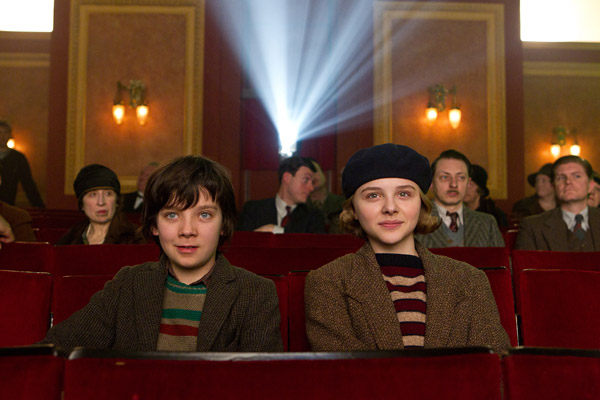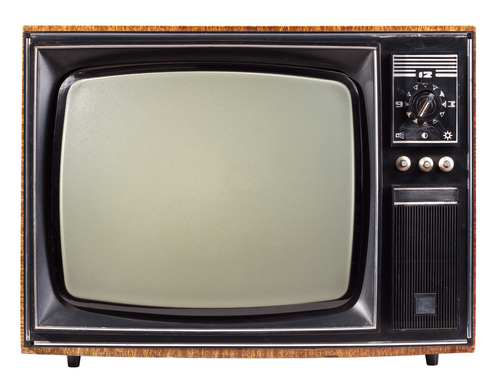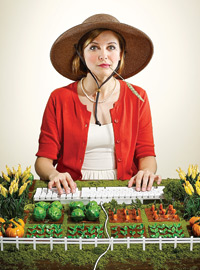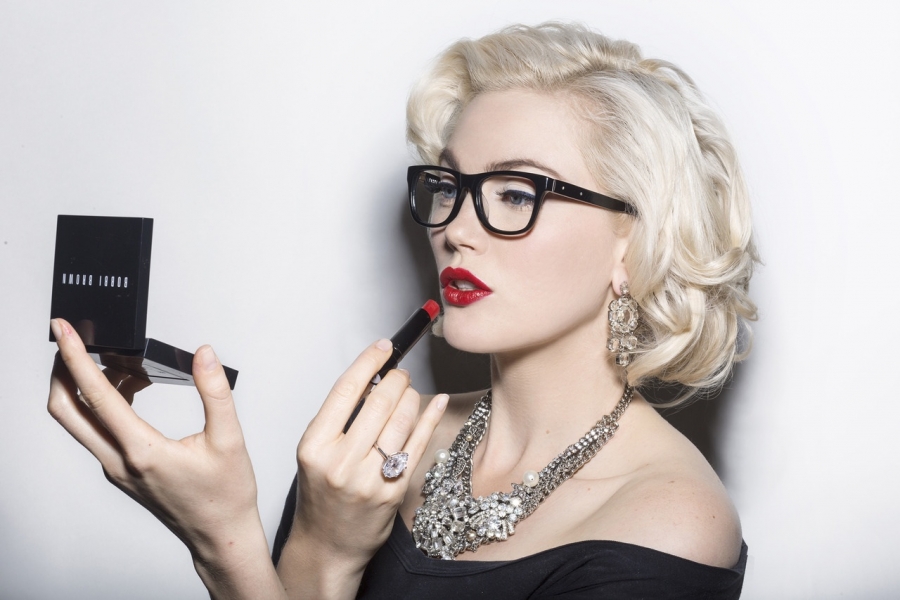Martin Scorsese making a film from a children's book is as improbable as, well, Martin Scorsese making a film from a children's book. But with its beautiful panoramic shots of 1930s Paris, the director's visually thrilling "Hugo" has real moments of 3-D magic. Sadly, they aren't quite enough to make this adaptation of Brian Selznick's celebrated novel, "The Invention of Hugo Cabret," a wholly satisfying experience.
The director credits having a 12-year-old daughter with inspiring his desire to see the world through "the imagination and creativity of a child," but it's easy to understand how "Hugo's" protagonist must have resonated with the filmmaker, who famously grew up asthmatic and was often separated from other children.
A 12-year-old boy in 1931 Paris, Hugo (Asa Butterfield) lives by himself in the upper reaches of a massive train station, rushing around through hidden corridors like a boy Phantom of the Opera as he keeps all the station clocks wound and in good repair.
PHOTOS: Scorsese's 'Hugo' and other change-ups
Still mourning the death of his clockmaker father (a cameo byJude Law), Hugo tries to stay connected to him by searching for the spare parts necessary to animate a mysterious automaton his father rescued from a museum's neglect.
That obsessive quest for gears, which sometimes involves pilferage, leads to a head-on collision with the gruff and mysterious old man (Ben Kingsley in top form) who runs a toy shop in the train station and seems to live only to thwart Hugo's desires.
But the old man also has a ward, a girl named Isabelle who is exactly Hugo's age. Spiritedly played by the gifted and versatile Chloe Moretz ("Kick-Ass," "Diary of a Wimpy Kid"), Isabelle loves adventure, secrets and big words in equal measure, and she turns out to be the ideal comrade in arms for our young hero.
Given how inescapably bloody and violent so many of Scorsese's past films have been, it's something of an upset that "Hugo" is effective at all. The book Scorsese chose to adapt is out of the ordinary all by itself: A thumping 534 pages long, it combined extensive text with so many illustrations that it became the first novel ever to win the prestigious Caldecott Medal for picture books for children.
Scorsese, working once again with cinematographer Robert Richardson, was clearly stimulated as well by the creative possibilities opened up by working in 3-D.
"Hugo's" use of the third dimension is exceptionally well thought out and essential to the film's ability to make a children's vision of the world come to life. Making that world a Parisian one has also inspired "Hugo's" visual team, led by production designer Dante Ferretti, and the film's numerous shots floating over the rooftops of Paris are always fantastic. As with the original novel, the wordless parts of "Hugo," including a masterful re-creation of a famous train wreck, are very much its strength.
As written by John Logan, however, "Hugo's" story elements are fitfully problematical even though the film's trio of central actors are perfectly fine and do all that could be expected of them. Butterfield, best known for playing the lead in "The Boy in the Striped Pajamas," is first among equals as young Hugo, expertly capturing the wary, almost feral solitude of a classic street-smart urchin.
The original story in Brian Selznick's book is strictly serious, but the movie for reasons of its own has chosen to add a major slapstick element that does nothing but misfire. This problem coalesces around the character of the station inspector, greatly expanded from the book and played by Sacha Baron Cohen in a manner both weirdly menacing and slightly risqué that clashes with the rest of the film.
As the instigator of a series of halfhearted, overly broad chases of Hugo through the train station that also involve characters played by Richard Griffiths, Frances De La Tour and Emily Mortimer, the inspector's malevolent antics undermine "Hugo's" other virtues and underscore how far from Scorsese's strengths this kind of farcical material is.
Coming to the film's rescue, fortunately, is one of Scorsese's great passions, his love for the early history of cinema. "Hugo" deals extensively with one of the movie's key pioneers, the great Georges Méliès, whose 1902 "A Trip to the Moon" was one of the art form's first international sensations.
Scorsese's affection for this man and his work, which extended to building a replica of Méliès' famous glass-walled studio and meticulously re-creating his gorgeously tinted "Kingdom of the Fairies," bring a vividness to "Hugo's" closing sections.
"Films have the power to capture dreams," Méliès said, and the way they've captured Scorsese's can't be denied.
'Hugo'
MPAA rating: PG, for mild thematic material, some action/peril and smoking
Running time: 2 hours, 7 minutes
.gif)




.jpg)


